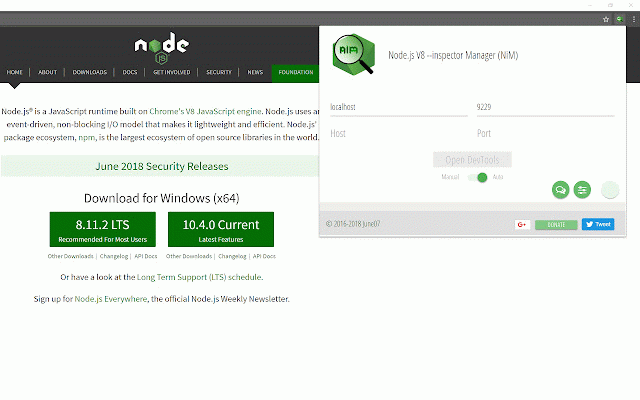

Return Value: : Returns the formatted string which represents the object. This risk of side effects is high depending on the getter function. If it is set to ‘set’ then only getters with a corresponding setter will be inspected. If it is set to ‘get’ then only getters will be inspected.

Default sort is used if set to ‘true’ and it is used as a compare function if set to a function. sorted | : By default, the value of the object is set ‘false’, if it is set ‘true’ or a function is passed, all properties are sorted in the formatted string.To format the input in a single line, set it to Infinity. While formatting it specifies the maximum length at which input values are split across multiple lines. You can also pin nodes using the small Needle Note icon on top of the node. You can get an overview of these tools over here. It is a debugger interface for Node.js applications that uses Blink Developer tools and is a part of the Chromium project. When you select nodes in the graph, they will appear in the node inspector. The node-inspector has been specifically written for debugging Node.js applications and is popular in the web community for debugging Node applications. breakLength : By default, the value of the object is set ’80’. The node inspector is a powerful tool that allow you to compare previews between two selected nodes, access advanced node features and more Selection and Pinned nodes.To show (”) no characters, set the value to 0 or negative and to show all elements, set the value to Infinity or null. length of characters to be included in the formatted result. It works almost similar to chrome developer tools. While formatting the maximum length of characters is specified, i.e. Inspector in node.js is a debugging interface for node.js application that is contained in the app.js file and used blink developer tools. maxStringLength : By default, the value of the object is set ‘Infinity’.To show (0) no elements, set the value to 0 or negative and to show all elements, set the value to Infinity or null. how many Arrays, WeakMaps, and WeakSets are needed to be included in the formatted result. While formatting maximum length is specified, i.e. maxArrayLength : By default, the value of the object is set ‘100’.showProxy : By default, the value of the object is set ‘False’, if it is set ‘true’ then the target and handler objects are included by the proxy inspection.customInspect : By default, the value of the object is set ‘true’, if it is set ‘false’ then, (depth, opts)] functions are not invoked.colors : By default, the value of the object is set ‘False’, if it is set ‘true’ then output gets colored style with ANSI color codes.It specifies how many times to recurse and while inspecting large objects and call stack size is passed Infinity or null to recurse up to the maximum. depth : By default, the value of the object is set ‘2’.showHidden : By default, the value of the object is set ‘False’, if it is set ‘true’ then it starts showing hidden non-enumerable symbols and properties along with user-defined prototype, WeakMap and WeakSet entries in the formatted result.Options : The options are of ‘object’ type which accepts the JSON form of the data. Object : Any Class, Function, Object, or JavaScript primitive. Parameters: This function accepts two parameters as mentioned above and described below: For inspected value, it either uses the constructor name or to make an identifiable tag.

It returns output that may change any time to alter the result supplementary options (like showHidden, depth) could be passed. The util.inspect() method is not programmatically dependent. node. The util.inspect() (Added in v0.3.0) method is an inbuilt application programming interface of the util module which is intended for debugging and returns a string representation of the object. I saw that there is an option to use node-inspector using docker-compose but since I am running all my services in k8s I choose Minikube. ISRO CS Syllabus for Scientist/Engineer Exam.ISRO CS Original Papers and Official Keys.GATE CS Original Papers and Official Keys.Test that selecting a text node invokes the font editor on its parent node.Ĭonst TEST_URI = URL_ROOT + "doc_browser_fontinspector.html" Ĭonst = await (bodyNode) Ĭonst onInspectorUpdated = inspector. * Any copyright is dedicated to the Public Domain.


 0 kommentar(er)
0 kommentar(er)
